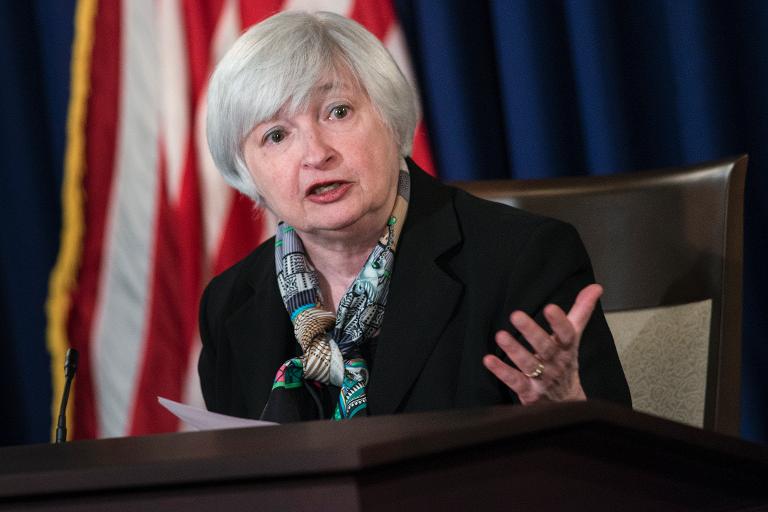
Eight largest US banks must raise capital buffers
(MENAFN- AFP) US banking regulators on Tuesday ordered the eight largest "too big to fail" banks to raise capital levels in a bid to address weaknesses seen in the 2008 financial crisis.Federal Reserve Chair Janet Yellen said the robust capital standards -- the banks will need to raise a reported $68 billion in additional capital -- were "essential to reduce systemic risk and mitigate the distortions imposed by institutions deemed too big to fail."Fed Governor Daniel Tarullo said the bigger capital cushion would serve as a "critical backstop" to the banking system.The Federal Reserve, the Federal Deposit Insurance Corporation (FDIC) and the Treasury Department's Office of the Comptroller of the Currency adopted the rule requiring the systemically important banks to hold significantly increased levels of high-quality capital in relation to their risk exposure, their so-called supplementary leverage ratio.The banks affected are Bank of America, The Bank of New York Mellon, Citigroup, Goldman Sachs, JPMorgan Chase, Morgan Stanley, State Street and Wells Fargo.The Fed said its aim was "to reduce the effect of a firm's failure or material weakness on the financial system and the broader economy" -- the latest step taken by regulators to reduce the probability that a large, interconnected bank would fail, and in doing so would damage the US financial system.The move is designed to help ensure banks can remain on their feet when the funding market for banks suddenly dries up in a crisis, as happened in 2008, when governments were forced to step in and prop up financial institutions.Under the action, the banks will have to meet an additional 2.0 percent of capital on top of the 3.0 percent level required under the Basel III regulatory reforms, which US regulators have criticized as too lax.By meeting the 5.0 percent ratio, the banks will avoid Fed limitations on dividends and discretionary bonus payments.The eight banks' subsidiaries will be required to have loss-absorbing capital worth more than 6.0 percent of their assets, double the Basel III level.The supplemental level, like the 3.0 percent Basel level, will take effect on January 1, 2018.- Additional capital charge? -Tarullo, who is in charge of Fed regulation, suggested that the new surcharge could help pave the way for an additional capital charge to address risks posed by short-term wholesale funding that contributed to the 2008-2009 global financial crisis.The surcharge "provides a little bit of reinforcement to a potential agenda item which I've mentioned before, and that is the possibility of an additional capital charge" on wholesale funding, he said.The director of the FDIC, Jeremiah Norton, noted that the new rule would help offset weaknesses in the Basel III reforms, which failed to address key industry problems highlighted in the financial crisis, like the appropriate risk-weighting for mortgages and foreign sovereign debt."These and other deficiencies underscore the need for the US banking system to have a meaningful leverage ratio requirement and for policy makers to continue to improve the capital framework going forward," he said.

Legal Disclaimer:
MENAFN provides the
information “as is” without warranty of any kind. We do not accept
any responsibility or liability for the accuracy, content, images,
videos, licenses, completeness, legality, or reliability of the information
contained in this article. If you have any complaints or copyright
issues related to this article, kindly contact the provider above.

















Comments
No comment